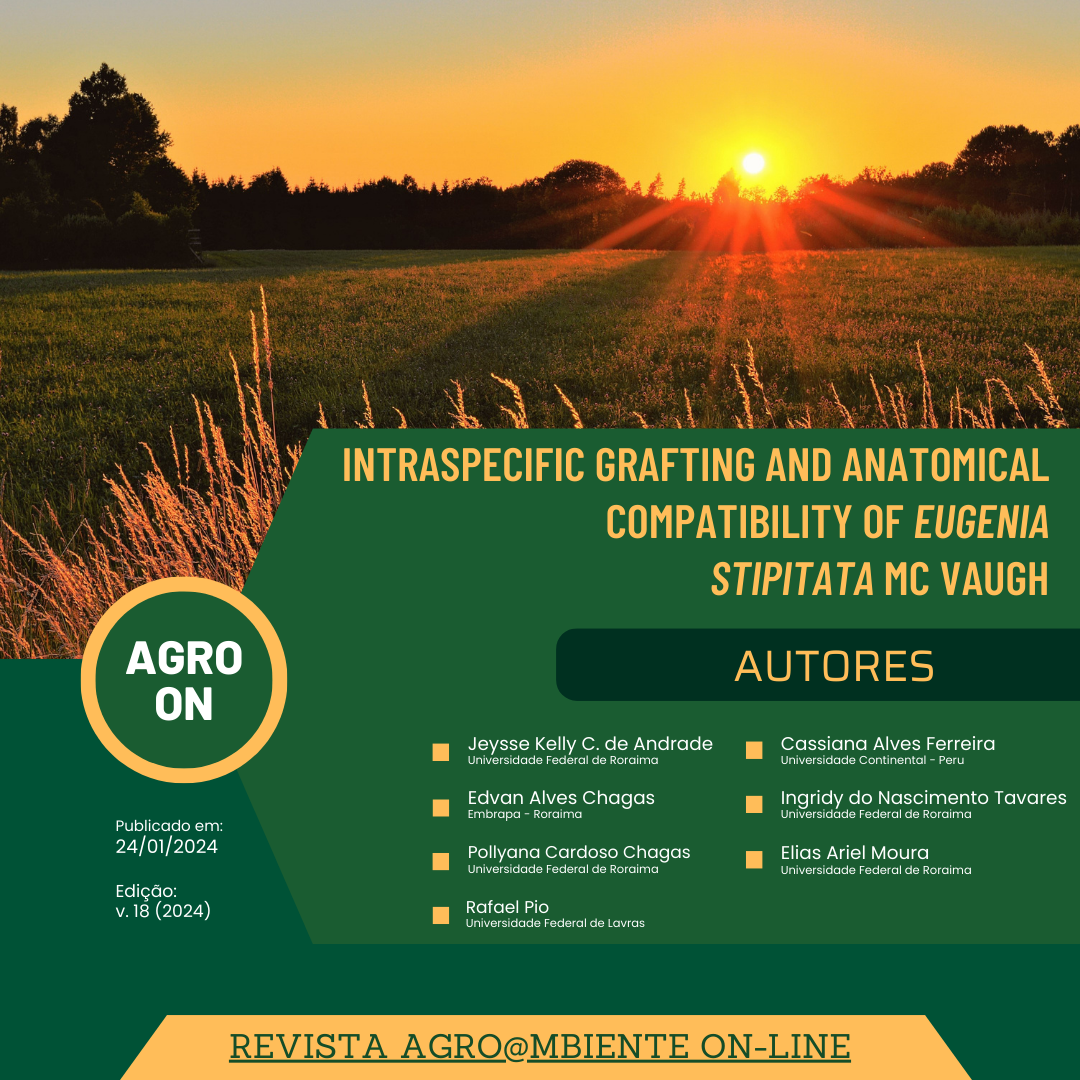Intraspecific grafting and anatomical compatibility of Eugenia stipitata Mc Vaugh
DOI:
https://doi.org/10.18227/1982-8470ragro.v18i00.7821Keywords:
Anatomical analysis. Grafting. Eugenia stipitata. Vegetative propagation.Abstract
The E. stipitata is a native fruit tree from the Amazon, currently in the domestication phase due to its high nutritional and economic potential. In this process, studies aiming at the technical feasibility of propagating materials with desirable agronomic qualities are necessary but still incipient. Thus, the objective of this study was to evaluate different grafting methods forE. stipitata propagation and the compatibility between scion and rootstock using anatomical analysis as a tool. For the experiment, a randomized block design was used in a split-plot scheme over time, with three replications. The plots consisted of three grafting types: cleft grafting, side-veneer grafting, and budding. The subplots were four evaluation times: 30, 60, 90, and 120 days after grafting (DAG). The evaluated variables were the grafting success rate, the number of shoots per graft, shoot length, and shoot diameter. There was a significant interaction between the factors under study. During the experimental period, an increasing grafting success rate and the number of shoots emitted were observed for budding, although with a low success rate. Through cleft grafting, there was a complete loss of shoots at 120 DAG, leading to the subsequent death of all tissues. Budding grafting appears as a promising method for E. stipitata propagation, demonstrating vascular tissue connection feasibility, although this effect did not reflect in the grafting success rate.

Downloads
Published
Issue
Section
License
Copyright (c) 2024 AGRO@MBIENTE ON-LINE JOURNALRAGR

This work is licensed under a Creative Commons Attribution-NonCommercial-NoDerivatives 4.0 International License.
I declare on my behalf and on behalf of the other authors that I represent in the act of submitting this article, to REVISTA AGRO@MBIENTE ON-LINE that: • 1. The content of the article is the result of original data and not published or submitted to other journals . • 2. In addition to the lead author, all co-authors participated sufficiently in the work to make public their respective responsibilities for the content. • 3. In case of acceptance of the article, the authors agree that the copyright referring to it will become the exclusive property of Revista Agro@mbiente On-line, any reproduction, total or partial, in any other part or means of dissemination is prohibited, printed or electronic, without the prior and necessary authorization being requested and, if obtained, acknowledgments must be made to the Revista Agro@mbiente On-line of the Centro de Ciências Agrárias/UFRR.


